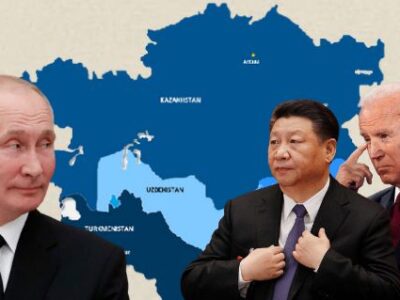Hafsa Binte Shoaib
On August 2, 2023, the Foreign Minister of Iran, Amir Abdollahian, landed in Pakistan for a two-day official visit. Pakistan’s Ministry of Foreign Affairs, in its press release, said the visit will feature “discussion on all aspects of bilateral relations and the emerging regional situation.” During the visit, Iran’s and Pakistan’s top diplomats agreed to continue their active engagement on Afghanistan. This shared interest in promoting peace and stability in Afghanistan is something that can become the basis for both countries to strengthen their bilateral relations. Also, the emerging regional situation, marked by the Saudi-Iran rapprochement and China’s increasing role and influence, speaks to the need for improving Pak-Iran ties, with a view to making the region more connected and integrated.
Here, it is important to succinctly take stock of Pak-Iran relations. Despite sharing cultural, historical, and religious linkages, Pakistan and Iran have been unable to foster an enduring partnership. Relations between the two Muslim neighbours have remained topsy-turvy. If anything, while the potential to take Pak-Iran ties to the next level has always been enormous, their history has been one of missed opportunities, with periods of cooperation not delivering strategic successes. The past suggests that both Iran and Pakistan cooperated so long as they shared the same geopolitical camp, especially during the Cold War. Both countries joined the Central Treaty Organization (CENTO) and the Shah regime supported Pakistan during the 1965 Indo-Pak War. This bonhomie gave way to distrust after the Iranian Revolution of 1979, which, among other things, turned Iran into America’s biggest foreign policy challenge in the Middle East. Besides, Pakistan and Iran did not see eye to eye on the Afghan Taliban and their approach to governing Afghanistan in the 1990s. While Pakistan was one of the countries that recognized the Taliban back then, Iran and Afghanistan almost went to war with each other. Further, Iran’s burgeoning ties with India, as evidenced by the operationalization of the Chabahar Port, as well as the brewing conflict between Tehran and Washington, were some of the factors that kept both countries from substantively improving their relations. That said, Pakistani and Iranian policymakers have tried to capitalize on opportunities that have come their way. Pakistan, it must be stated, has always been a willing and active mediator in conflicts in the Middle East involving Iran and Saudi Arabia. However, these efforts have not borne fruit.
Now, however, there is an opportunity to turn a page in their relations given that ensuring peace and security in Afghanistan is a common interest for Pakistan and Iran. Tehran’s “neighborhood first” policy suggests that the country is interested in resolving its Afghanistan conundrum with the help of Islamabad. This is because of Pakistan’s experience in dealing and negotiating with the Afghan Taliban. Although Iran and the Afghan Taliban have much better relations than they had in the 1990s, clashes on the Iran-Afghan border have increased since the formation of the latter’s new government in 2021. Pakistan certainly has the capacity to mediate between the two. And with the U.S. exiting Afghanistan, Iran and Pakistan find themselves in a better position to engage on issues pertaining to that country. It is in this context that discussions on the future of Afghanistan featured prominently during Abdollahian’s visit.
Apart from friendly relations with neighbors, becoming drivers and beneficiaries of regional connectivity is a major foreign policy goal for both Pakistan and Iran. The historic Saudi-Iran rapprochement, facilitated by China, must be seen as a great opportunity to bolster regional connectivity. This is primarily because Pakistan will no longer need to walk a tightrope between Iran and Saudi Arabia when it comes to undertaking connectivity-related initiatives. Further, China can engage Pakistan, Iran, and Saudi Arabia, with a view to strengthening and extending the China-Pakistan Economic Corridor (CPEC) and other planks of the Belt and Road Initiative (BRI). This will be further complemented by China’s ever-increasing strategic engagement with Iran. Indeed, China’s mediatory efforts in the Middle East have increased its clout in the region, indicating a shift in power dynamics. Pakistan and Iran should view this as an ideal opportunity to robustly engage with each other in bilateral and multilateral fora. This is primarily because healthy Pak-Iran ties will give impetus to multidirectional connectivity. A failure to capitalize on this strategic opportunity will give spoilers a greater chance to hamper the prospect of regional connectivity.
Hafsa Binte Shoaib is a Research Intern at the Center for Security, Strategy and Policy Research (CSSPR), The University of Lahore.






Comments